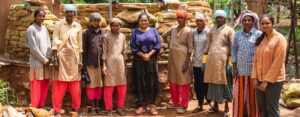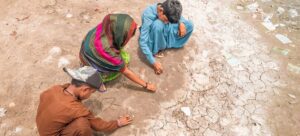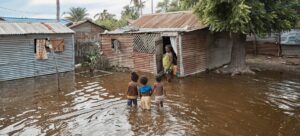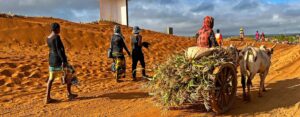Heatwaves, floods, droughts, wildfires and rapidly intensifying tropical cyclones caused misery and mayhem, upending everyday life for millions and inflicting many billions of dollars in economic losses, according to the WMO State of the Global Climate 2023 report.
“Sirens are blaring across all major indicators… Some records aren’t just chart-topping, they’re chart-busting. And changes are speeding up,” said UN Secretary-General António Guterres in a video message for the launch.
Red alert
Based on data from multiple agencies, the study confirmed that 2023 was the warmest year on record, with the global average near-surface temperature at 1.45°C above the pre-industrial baseline. It crowned the warmest ten-year period on record.

“The scientific knowledge about climate change has existed for more than five decades, and yet we missed an entire generation of opportunity,” WMO Secretary-General Celeste Saulo said presenting the report to the media in Geneva. She urged the climate change response to be governed by the “welfare of future generations, but not the short-term economic interests”.
“As Secretary-General of the World Meteorological Organization, I am now sounding the red alert about the state of the global climate,” she emphasised.
World in disarray
However, climate change is about much more than air temperatures, the WMO experts explain. The unprecedented ocean warmth and sea level rise, glacier retreat and Antarctic sea ice loss, are also part of the grim picture.
On an average day in 2023, nearly one third of the ocean surface was gripped by a marine heatwave, harming vital ecosystems and food systems, the report found.
The glaciers observed suffered the largest loss of ice on record – since 1950 – with extreme melt in both western North America and Europe, according to preliminary data.
Alpine ice caps experienced an extreme melting season, for instance, with those in Switzerland loosing around 10 per cent of their remaining volume in the past two years.
The Antarctic sea ice loss was by far the lowest on record – at one million square kilometres below the previous record year – equivalent to the size of France and Germany combined.
Observed concentrations of the three main greenhouse gases – carbon dioxide, methane, and nitrous oxide – reached record levels in 2022 and continued increase in 2023, preliminary data shows.
Global repercussions
According to the report, weather and climate extremes are either the root cause or serious aggravating factors that in 2023 triggered displacement, food insecurity, biodiversity loss, health issues and more.
The report, for example, cites figures that the number of people who are acutely food insecure worldwide has more than doubled, from 149 million before the COVID-19 pandemic to 333 million in 2023 in 78 countries monitored by the World Food Programme (WFP).
“The climate crisis is the defining challenge that humanity faces. It is closely intertwined with the inequality crisis – as witnessed by growing food insecurity and population displacement, and biodiversity loss,” said Ms. Saulo.
A glimmer of hope
The WMO report not only raises alarm but also offers reasons for optimism. In 2023, renewable capacity additions soared by almost 50 per cent, totalling 510 gigawatts (GW) – the highest observed rate in two decades.
The surge in renewable energy generation, primarily fuelled by solar radiation, wind, and the water cycle, has positioned it as a leading force in climate action for achieving decarbonization goals.
Effective multi-hazard early warning systems are crucial for mitigating the impact of disasters. The Early Warnings for All initiative aims to ensure universal protection through early warning systems by 2027.
Since the adoption of the Sendai Framework for Disaster Risk Reduction, there has been an increase in the development and implementation of local disaster risk reduction strategies.
From 2021 to 2022, global climate-related finance flows nearly doubled compared to 2019-2020 levels, reaching nearly $1.3 trillion.
However, this amounts to only about one percent of global GDP, underscoring a significant financing gap. To achieve the objectives of a 1.5°C pathway, annual climate finance investments must increase more than sixfold, reaching almost $9 trillion by 2030, with an additional $10 trillion needed by 2050.
Cost of inaction
The cost of inaction is staggering, the report warns. Between 2025 and 2100, it may reach $1,266 trillion, representing the difference in losses between a business-as-usual scenario and a 1.5° C pathway. Noting that this figure is likely a significant underestimate, the UN weather experts call for immediate climate action.
The report is launched ahead of the Copenhagen Climate Ministerial meeting, where climate leaders and ministers from around the world will gather for the first time since COP28 in Dubai to push for accelerated climate action, including delivering an ambitious agreement on financing at COP29 in Baku later this year – to turn national plans into action.






















